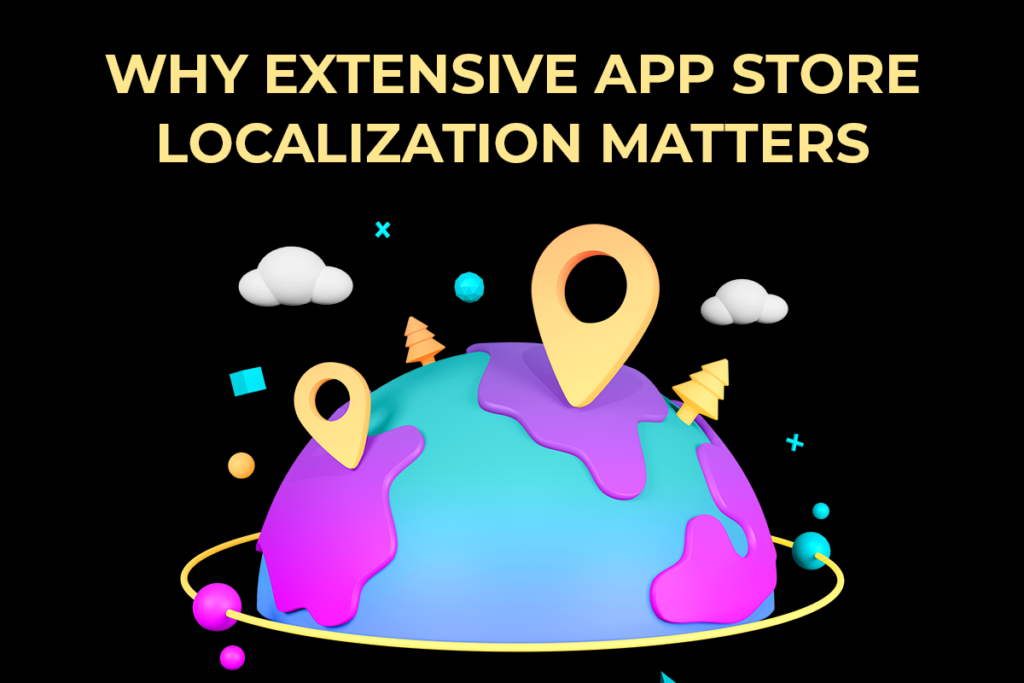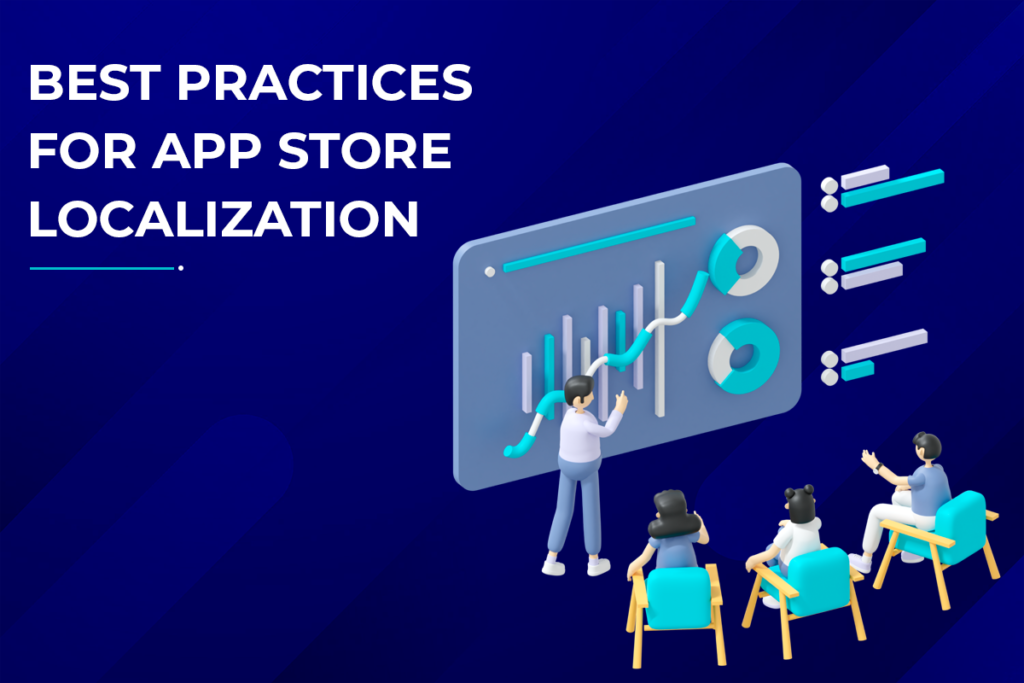
App Store Localization: Opening Doors to Higher Conversion Rates Globally
I. Localization 101: Unlocking Global App Success
In today’s digital landscape, app localization is more than a buzzword; it’s a strategic imperative. At its core, app localization involves:
- Translation: Converting the app’s text into different languages.
- Adaptation: Modifying content to suit local tastes and cultural norms.
- Transcreation: Creatively adapting a message so it resonates with the target audience.
This trifecta ensures that your app speaks the language of your users, both literally and culturally.
The benefits of app localization are substantial, paving the way for app owners to:
- Expand to New Markets: Enter global markets with a product that local users can easily adopt.
- Improve User Experience: Offer an app that feels native to each user, enhancing overall satisfaction.
- Increase Trust and Understanding: Foster a connection by showing that you value the local culture and language.
For instance, research shows that localized apps can experience a conversion rate uplift of up to 200%. This statistic alone underscores the importance of a well-localized app.
The Significance of Nuanced Localization
First impressions are critical. The app store is where users first encounter your app, and it’s where localization can have the most immediate impact. Proper localization:
- Builds Local Awareness: It introduces your app in a relatable way, setting the stage for user engagement.
- Cultivates Interest and Trust: A localized app store presence shows that you’re committed to providing a tailored user experience.
- Enhances App Credibility: Users are more likely to trust an app that respects their language and culture.
Conversely, a lack of localization or poor-quality localization can be detrimental:
- Undermines Credibility: Users might question the quality of an app that overlooks their language.
- Discourages Users: A non-localized app can alienate potential users, leading them to seek alternatives.
Localization is not just about translating words; it’s about connecting with hearts and minds. As the digital world grows smaller, the impact of localization on your app’s success grows exponentially.
II. Why Extensive App Store Localization Matters

The importance of app store presentation cannot be overstated. It’s the first encounter potential users have with your app. In effect, app stores are the battlegrounds where first impressions are made, and conversion battles are won or lost. Notably, users often prefer apps that speak their language – both literally and culturally. That’s where localization comes into the picture.
- App localization ensures that every piece of text and every user interface element is tailored to the user’s language and cultural norms.
- It optimizes your app store page to reach a wider audience, unlocking new markets across the globe.
Localized content does more than just translate the words; it builds a bridge to your users’ worlds. When users see an app in their own language, understanding and trust naturally follow. This trust is pivotal in converting users from interested browsers to committed downloaders.
- Users are more likely to download an app when its store page offers them information in their local language.
- Trust elements like user reviews, screenshots, and videos need localization to resonate with the audience.
Conversely, a poorly localized app store page can be damaging. When users spot errors in translation or cultural mismatches, they are quick to judge the overall quality of the app. The app appears sloppy, and the companies behind them seem indifferent to users’ specific needs.
- Simple translation mistakes or outdated cultural references can alienate potential users.
- In extreme cases, such missteps can offend users, sometimes resulting in a public relations crisis.
Integrating substantial statistics reinforces the importance of a well-localized app store presence. For instance, a study by Distimo (now App Annie) showed that localizing an iPhone application title and description led to a 767% increase in downloads. Moreover, TUNE’s analysis found that apps localized in 20 more countries experienced a 128% boost in downloads on average.
- On top of increased downloads, localization can significantly affect user retention and engagement.
- App stores may give better visibility to well-localized apps, improving rankings and organic reach.
Comprehensive app store localization is more than a mere suggestion; it’s a compelling strategy for serious app marketers. It is essential to user-centric marketing and has a direct impact on the success metrics of your app. By providing localized content, apps can achieve a commendable presence that leads to higher conversions and a stronger market position.
III. Best Practices for App Store Localization

When considering localization, quality cannot be overstated. A direct translation often misses the mark. It is essential to:
- Employ skilled translators who understand the nuances of the target language and culture.
- Integrate local customs, values, and slang to resonate with users.
- Adapt graphical elements to align with local sensibilities and symbolism.
Furthermore, focus on the app’s textual elements. The title, description, and keywords are pivotal for visibility. To optimize these:
- Craft a title that is catchy and relevant within the local context.
- Write a description that highlights the app’s features and benefits, tailored to local users.
- Research and use keywords that are trending and pertinent in the local market.
Additionally, as your app enters new markets, keep an eye on your localized content. Regular reviews help to:
- Address any emerging cultural shifts or language changes.
- Ensure all local holidays or events are reflected in your app’s marketing.
- Confirm that the localized version aligns with any updates to your app.
Studies show that apps that invest in thorough localization see a significant uptick in performance. For instance:
- Localized apps have reported up to a 200% increase in download rates.
- Conversion rates can soar by 80% with effective localization strategies.
- A 25% rise in revenue has been attributed to the localization of app store pages.
In essence, the meticulous localization of app store content is more than just translating words. It’s about creating a connection with your potential users. An app that feels native can greatly influence user trust and interest, leading to higher conversion rates and sustained success in new markets.
IV. Tools to Streamline and Scale Localization

Having discussed the best practices for app store localization, let’s now dive into the tools that can simplify and scale this process.
Content Management Systems/Localization Dashboards:
- A centralized dashboard is crucial for efficient localization.
- It houses all the text strings in your app for easy access and translation.
- You can monitor the progress of localization across different languages and regions.
- These dashboards often support collaboration, allowing multiple team members to work in tandem.
Translation Management Systems:
- Translation Management Systems (TMS) offer a structured approach to translating content.
- They allow you to assign tasks to translators and keep track of deadlines.
- With TMS, consistency in terminology and brand voice is easier to maintain.
- They often come with built-in translation memories that save time and costs by reusing previous translations.
Moreover, transitioning between the initial translation and ongoing maintenance becomes seamless with the right TMS.
Built-in Analytics:
- Analytics help measure the effectiveness of your localized content.
- These tools can track user engagement and conversion rates per region.
- You can see the direct impact of localization on app downloads and in-app activity.
- It’s vital to watch these metrics to understand where further localization efforts may be needed.
By integrating these tools into your localization strategy, not only do you streamline the process, but you also enhance your ability to make informed decisions based on real-time data. This can lead to a significant improvement in conversion rates, user satisfaction, and ultimately, the global success of your app.
The tools we’ve discussed are essential for scaling app store localization efficiently. They enable real-time collaboration, consistent quality, and actionable insights into localization performance. Implementing these tools can dramatically increase an app’s potential to succeed on a global stage.
V. Success Stories: The ROI of Good Localization
Realizing the potential of localization can be better understood through success stories. Many brands have seen a significant uptick in performance post-localization. For instance:
- A gaming app experienced a 300% increase in downloads. This was after localizing content for the Japanese market.
- An e-commerce platform reported a 25% rise in user engagement. This happened once they adapted their app for Spanish-speaking users.
These examples highlight the tangible benefits of app store localization. But it’s not just about downloads. There’s more to it:
- User retention rates can soar. One productivity app saw a 70% retention increase after localizing for the Chinese market.
- Revenue can also see a boost. A fitness app doubled its revenue by adapting to local European languages.
These data points underline the impact of localization. It’s clear that it’s not just an optional strategy. It’s a necessity for growth. Furthermore, localization influences app store rankings:
- Higher rankings are often a result of better localized content. A travel app jumped to the top 10 in various regions by localizing its descriptions and keywords.
These success stories serve as strong endorsements for app store localization. They paint a picture of how localization is indeed a profitable investment.
Good localization practices lead to greater app installs and usage. They provide increased revenue and improved user retention. The return on investment is evident. Brands that invest in high-quality localization see their apps climb up the rankings. This results in a stronger global presence. It’s clear that localization is not just about reaching more users. It’s about engaging them in a meaningful way. It’s about building a lasting relationship with your audience around the world.
Key Takeaways
In conclusion, mastering app store localization is not merely advantageous—it’s crucial for app businesses aiming to flourish on a global scale. A well-localized app speaks directly to the user, fostering trust and enhancing user experience, which in turn, translates to higher download rates, increased revenue, and improved user retention. Effective localization reflects a nuanced understanding of cultural nuances, ensuring your app resonates with users worldwide.
- Localization goes beyond mere translation; it impacts visibility, adoption, and revenue.
- When you localize an app, you cater to global audiences with a curated experience that resonates with them culturally.
This leads us to the insight that a well-localized app store presence substantially boosts an app’s credibility.
- Potential users perceive a localized app as more legitimate and user-friendly.
- Credible apps are likely to see higher conversion rates as users feel understood and valued.
Let’s not forget, localizing your app isn’t just about immediate impact, it’s a strategic move.
- The initial effort in localization pays off with increased conversions over time.
- Sustained localization efforts can secure long-term success in diverse markets.
The process of refining your app’s store content for local markets is more than just translation. It’s about connecting with the audience.
- Localized titles, descriptions, and keywords make your app more visible and relatable.
- Local relevance has a direct correlation with higher placement in app store rankings.
Investing in the tools to effectively localize your content can streamline the process.
- Tools like CMS and translation management systems simplify the localization workflow.
- Analytics pinpoint the impact of localization efforts, helping to refine strategies for better RoI.
In summary, app store localization is a powerful strategy for app growth.
- It’s a critical factor in enhancing user experience and satisfaction across different markets.
- Employing recommended best practices and utilizing the right tools helps in achieving this.
Investing in the right tools and practices for localization pays dividends, providing a seamless workflow and valuable insights through analytics. Remember, localization is about building lasting relationships with a diverse audience. It’s a strategic investment that can propel your app to the top of global markets. By embracing localization, you’re not just reaching users; you’re engaging them in a language they understand, paving the way for sustained app growth and success.
Please feel free to Contact Us in case you need any guidance regarding your app marketing needs.
FAQ: App Store Localization
What is app store localization, and why is it important?
App store localization is the process of adapting an app’s market presence to suit different languages and cultural contexts. It’s important because it can significantly increase an app’s appeal in international markets, leading to higher conversion rates and downloads. A localized app feels more personal and relevant to users, which encourages usage and retention.
How does app localization affect user experience?
Localization improves user experience by providing an app interface that users can navigate and understand in their own language. By considering local customs, cultural nuances, and language preferences, localization ensures the app resonates with the user, enhancing their overall satisfaction and trust in the app.
Can app store localization lead to higher conversion rates?
Yes, numerous studies and success stories have shown that apps that undergo thorough localization can experience higher conversion rates. Users are more likely to download and engage with apps that cater to their language and cultural background, which can lead to an increase in conversion rates of up to 200%.
What elements of an app should be localized?
For a comprehensive localization strategy, consider localizing the app’s textual content (title, description, keywords), graphical elements (icons, screenshots), user interface, and any multimedia content (videos, audio). Don’t forget to adapt your app’s marketing materials and in-app content to reflect local holidays, events, and cultural references.
Are machine translations sufficient for localizing an app?
While machine translations can be a starting point, they often lack the nuance and cultural sensitivity required for effective localization. Employing skilled translators who are well-versed in the target language and culture is crucial to ensure the translated content is accurate, culturally appropriate, and resonates with the audience.
How do I know which markets to localize my app for?
Research where your app has the potential to succeed by analyzing market size, current app trends, language prevalence, and competition in those regions. Also, consider where your app is already gaining traction without localization as an indicator of where localized content could amplify success.
What tools can help streamline the app localization process?
Content Management Systems (CMS) and Translation Management Systems (TMS) can help manage and organize translations, track progress, and ensure consistency across different languages. Analytics tools are also vital for measuring the impact of localization on user engagement and conversions.
How often should I update my localized app content?
Localized app content should be reviewed and updated regularly to ensure it remains culturally relevant and reflective of any changes in language use. It’s especially important to update content in line with new app features, changes in local trends, and during major cultural events or holidays in the target region.
What is the potential return on investment (ROI) for localizing my app?
The ROI for localizing an app can be significant. Many apps see a substantial increase in downloads, user engagement, and revenue after localizing. For instance, a well-localized app can experience a boost in downloads by 128% on average, and sometimes even more, depending on the market and quality of localization.
Can poor localization affect my app negatively?
Absolutely. Poor localization can harm an app’s reputation, as users may see it as careless or disrespectful to their culture. Translation errors, cultural insensitivities, or failure to adapt to local norms can lead to negative reviews, reduced downloads, and potentially even public relations issues. It’s crucial to prioritize high-quality localization to avoid these pitfalls.




0